NAKS SF7-3PH Handleiding
Bekijk gratis de handleiding van NAKS SF7-3PH (10 pagina’s), behorend tot de categorie Afzuigkap. Deze gids werd als nuttig beoordeeld door 12 mensen en kreeg gemiddeld 4.5 sterren uit 6.5 reviews. Heb je een vraag over NAKS SF7-3PH of wil je andere gebruikers van dit product iets vragen? Stel een vraag
Pagina 1/10

RECEIVING AND INSPECTION
Immediately upon receipt of a shipment, carefully inspect for
damage and shortage. Turn impeller by hand to see that it turns
freely and does not bind. If any damage and/or shortage is detected
or suspected, the carrier must be asked to conduct an inspection.
The consignees representative should not accept shipment without
a notation on the delivery receipt indicating items not delivered or
apparent extent of damage.
When a shipment is opened and damage is found which was not
evident externally (concealed damage), it is mandatory that the
consignee request an immediate inspection by the carrier. Report
damage to the carrier within 15 days. Failure to report damage within
the above time limit will cause rejection of a claim.
HANDLING
When handling fans and their accessories, always use equipment
and methods that will not cause damage. Fans should be lifted using
slings and padding or spreaders to avoid damage.
CAUTION! Always make sure that all lifting and handling equipment
and techniques conform to current safety standards.
Avoid lifting fans in a way that will bend or distort fan parts. Never
pass slings or timbers through the orices of fan.
CAUTION! Do not lift by the fan hood. Fans with special coatings or
paints must be protected in handling to prevent damage.
STORAGE
Fans are protected against damage during shipment. If they
cannot be installed and put into operation immediately upon receipt
certain precautions are necessary to prevent deterioration during
storage. Responsibility for integrity of fans and accessories during
storage must be assumed by the user. The manufacturer will not
be responsible for damage during storage. These suggestions are
provided solely as a convenience to the user, who shall make his
own decision as to whether to use any or all of them.
INDOOR: The ideal storage environment for fans and accessories is
indoors, above grade, in a low humidity atmosphere which is sealed
to prevent the entry of blowing dust, rain, or snow. Temperatures
should be evenly maintained at between 70°F and 105°F (wide
temperature swings may cause condensation and “sweating” of
metal parts). Windows should be covered to prevent temperature
variations caused by sunlight. Provide thermometers and humidity
indicators at several points and maintain the atmosphere at 40%
relative humidity, or lower.
It maybe necessary to use trays of renewable desiccant or portable
dehumidier to remove moisture from the air in the storage enclosure.
Thermostatically controlled portable heaters (vented to outdoors)
may be required to maintain even temperatures inside the enclosure.
CAUTION! Provide re extinguishers, or re alarms, or emergency
response communication to protect building and equipment against
re damage. Be sure that building and storage practices meet all
local, state and federal re and safety codes.
The following fans or accessories must be stored indoors, in a clean
dry atmosphere:
a. Any fan that is protected by a cardboard carton.
b. Spare wheels or propellers.
c. Boxes, bags or cartons of hardware.
d. Curbs
e. Dampers
Remove any accumulations of dirt, water, ice or snow and wipe
dry before moving indoor storage. Allow cold parts to reach room
temperature to avoid “sweating” of metal parts. Open boxes or
cartons. Remove any accumulated moisture; if necessary use
portable electric heaters to dry parts and packages. Leave coverings
loose to permit air circulation and to permit periodic inspection.
Rotate wheels or propellers by hand to distribute bearing grease
over the entire bearing surfaces.
Store at least 3 ½” o the oor on wooden blocks covered with
moisture proof paper or polyethylene sheathing. Provide aisles
between parts and along all walls, to permit air circulation and space
for inspection.
OUTDOOR: Fans designed for outdoor use may be stored outdoors,
if absolutely necessary. The storage area should be reasonably level
and drained or ditched to prevent accumulation of water. Fencing
and lighting for security are desirable. Roads or aisles for portable
cranes and hauling equipment are needed. Consider the use of drift
fencing to minimize accumulation of blowing snow or dirt.
The following fans may be stored outdoors, if dry indoor storage
space is not available:
a. Fans intended for outdoor use that are crated in wood.
b. Wall fans installed in wall housings.
All fans must be supported on wooden blocks or timbers above water
or normal snow levels. Provide enough blocking to prevent settling
into soft ground. Fans should be set in place using the directional
arrow markings on the crate as a guide.
Locate pieces far enough apart to permit air circulation, sunlight,
and space for periodic inspection. Place all parts on their supports
so that rain water will run o, or to minimize water accumulation. Do
not cover parts with plastic lm or tarps-these cause condensation
of moisture from the air passing through heating and cooling cycles.
Fan wheels and propellers should be blocked to prevent spinning
caused by strong winds.
INSPECTION AND MAINTENANCE DURING STORAGE
Inspect fans and accessories at least once per month, while in
storage. Log results of inspection and maintenance performed. A
typical log entry should include the following:
a. Date
b. Inspector’s Name
c. Name of Fan
d. Location
e. Condition of Paint or Coating
f. Is moisture present?
g. Is dirt accumulated?
h. Corrective steps taken?
Read and Save These Instructions
NAKS Form 613157
INSTALLATION & MAINTENANCE INSTRUCTIONS
Direct Drive Restaurant Grease Rated Fans
______________________________________________________________________________________________________________________________
2020 © North American Kitchen Solutions
172 Reaser Court
Elyria, OH 44035
www.naksinc.com
Page 1 of 10

If moisture or dirt accumulations are found on parts, the source
should be located and eliminated. Fans should be rotated at each
inspection by hand ten to fteen revolutions to redistribute the
motor and bearing lubricant.
If paint deterioration begins, consideration should be given to
touch-up or repainting. Fans with special coatings may require
special techniques for touch-up or repair.
Machined parts coated with rust preventive should be restored to
good condition promptly if signs of rust occur. The most critical
items are pulleys, shafts and bearing locking collars. At the rst
sign of rusting on any of the above parts, remove the original rust
preventive coating with petroleum solvent and clean lint-free cloths.
Polish any remaining rust from surfaces with crocus cloth or ne
emery paper and oil. Do not destroy the continuity of the surfaces.
Wipe clean with lint-free cloths and recoat surfaces evenly and
thoroughly with Tectly 506 (Daubert Chemical Company) or equal.
For hard to reach internal surfaces or for occasional use, consider
using Tectyl 511M Rust Preventive or WD40 or equal.
REMOVING FROM STORAGE
As fans are removed from storage to be installed in their nal
location, they should be protected and maintained in similar
fashion, until the fan equipment goes into operation.
BEFORE INSTALLING CHECK FASTENERS
Before installing and before initial operations of the fan tighten
all mounting hardware and set screws. Verify wheel turns freely.
See table recommended tightening torque located in Maintenance
Section..
INSTALLATION
1. CAUTION! This unit has rotating parts and safety precautions
should be exercised during installation, operation and
maintenance.
2. WARNING! If gases, other than clean air, are to be
exhausted using the fan, then the user bears the
responsibility of determining that the fan is appropriate
and safe for the application.
3. WARNING! Do not use in hazardous environments
where the fan’s electrical system could provide ignition to
combustible or ammable materials, unless unit is built
specically for the environment.
4. COMMERCIAL KITCHEN EXHAUST APPLICATIONS
Ventilators should be installed in accordance with the
requirements of the National Fire Protection Association
Bulletin NFPA96 “Vapor Removal From Cooking Equipment”
taking specic note of the following:
a. Ducts terminating into the base of an up-discharge
exhaust fan must be constructed of carbon steel not less
than 16MSG (67.47 mm) and extend a minimum of 18”
(457 mm) above the roof surface.
b. Air velocity through the duct not less than 1500 FPM
(7.620 m/s).
c. A minimum of 40” (1016 mm) clearance be maintained
between the exhaust discharge and any roof surface. (To
comply, size 80 to 135 require 24” [610 mm] roof curb.
Size 150 to 200 require 18” [457 mm] roof curb.)
5. FAN INSTALLATION:
WALL MOUNT: If wall mounted, provide an opening
sucient for enclosing the curb cap. Securely fasten to the
wall through the cap. Fan breather tube should be on the
side of the fan at a 90° angle from vertical. A wall mounting
adapter option is available from the manufacturer. On wall
mounted models the wall bracket is shipped with the fan.
ROOF MOUNT: Roof exhausters should be mounted on a
roof curb suitable for the purpose, either eld fabricated or
prefab type. (Prefab type available as an accessory at extra
cost.) The fan should rest on the curb as level as possible.
When curb is not level (slightly pitched on at roofs) the
down spout drain tting should be located on lowest side of
curb. Securely fasten exhauster to curb using a minimum of
4 lag bolts - one centered each side.
6. CAUTION! Guards must be installed when fan is within
reach of personnel or within eight (8) feet (2.5 m) of working
level or when deemed advisable for safety.
7. IMPELLER-ORIFICE ADJUSTMENT: Turn centrifugal
impeller by hand to make sure it rotates freely. If impeller
hits inlet orice, adjust as follows: Loosen four (4) nuts inside
motor enclosure. Adjust motor laterally to equalize clearance
on all sides of impeller. Tighten four (4) nuts.
8. ELECTRICAL CAUTION: Before proceeding, make sure
electrical service to fan is locked in “OFF” position. Run
wires through the internal wiring post to the motor, to safety
disconnect switch if used. (Restaurant exhaust fans have
wires through breather tube.)
9. All wiring should be in accordance with local ordinances and
the National Electric Code.
FOR EC MOTOR WIRING REFER TO EC
MOTORING WIRING SECTION
10. BEFORE APPLYING POWER Check all fasteners for
tightness, particularly in the impeller hub. Turn impeller by
hand to make sure it is in alignment with the orice and fan
blades do not strike.
11. WARNING! Check voltage at the fan to see if it corresponds
with the motor nameplate. High or low voltage can seriously
damage the motor. Extra care should be taken when wiring
to two or three speed motors since improper connections will
damage motor and void motor warranty.
12. Apply power momentarily and compare the rotation of the
impeller with the directional arrow on fan. WHEEL ROTATION
IS CLOCKWISE AS VIEWED FROM TOP OF FAN.
WARNING! Do not operate at speeds higher than shown in
catalog for this equipment. Operation in the wrong direction
will deliver air but will overload the motor to the extent of
blowing fuses, or overload protection and could seriously
damage the motor. In the case of three phase motors, the
direction can be changed by interchanging any two of the
three motor leads. In the case of single phase motors, the
reversing instructions will appear on the wiring diagram in
the motor wiring compartment or on the motor.
13. GREASE TROUGHS AND CURB HINGES are available as
optional accessories. Installation instructions are shipped
with the accessories.
______________________________________________________________________________________________________________________________
2020 © North American Kitchen Solutions
172 Reaser Court
Elyria, OH 44035
www.naksinc.com
Page 2 of 10

______________________________________________________________________________________________________________________________
2020 © North American Kitchen Solutions
172 Reaser Court
Elyria, OH 44035
www.naksinc.com
Page 3 of 10
NOTE: The controller must be powered up before or at the
same time as power is supplied to the motor.
Mounted Speed Dial** (Figure 1) – The Perfect Speed control box
interface allows direct control of the motor by turning the onboard
speed dial located to the right of the digital display.
Optional Speed Controller (See Figure 2)
Remote Speed Dial** – (See Figure 2 and 2A) When selected with
this option the fan will come with a control cable and quick connect
Molex plug that can be plugged into the Molex plug on the single
speed potentiometer box***. Set blue speed dial on PerfectSpeed
controller to zero (turn left). Speed B on box is not used for single
speed selection and will not have a dial. The motor will shut o
between 0-1.9V.
Two Speed Dial** – (See Figure 2 & 2B) When selected with this
option the fan will come with a control cable and quick connect
Molex plug that can be plugged into the Molex plug on dual speed
dial. The supplied un-mounted toggle switch will select the Low
(LO) or High (HI) speed on the speed controllers based on the dial
settings. The motor will shut o between 0-1.9v.
Building Control 0-10VDC Wire Kit (See Figure 2 & 2C) Factory
mounted Molex receptacle that allows a quick connection to
supplied 2 wire connector (wires are 3” long).
NOTE: FOR OPTIONAL SPEED CONTROL SET THE BLUE
SPEED DIAL TO 0%.
More information on US Motors perfect speed interface can be
found at: http://www.usmotors.com/Our-Products/ECM-Motors
** Disconnects and Speed Dials are available as mounted on certain fan models and will be wired to motor as shown in Figure 10 for more
information see descriptions on submittals for these items weather they are mounted, not mounted or not available.
*** For extended wiring up to 100 Feet you will need (1) Receptacle Molex 3 1396-R4 with 3 Pin Female Molex 02-09-1119 and (1) Plug
Molex 3 Pin 1396-P1 with Pin Male Molex 02-09-2118 not provided.
FIGURE 1 Mounted Speed Dial
EC MOTOR ONLY
Product specificaties
| Merk: | NAKS |
| Categorie: | Afzuigkap |
| Model: | SF7-3PH |
Heb je hulp nodig?
Als je hulp nodig hebt met NAKS SF7-3PH stel dan hieronder een vraag en andere gebruikers zullen je antwoorden
Handleiding Afzuigkap NAKS
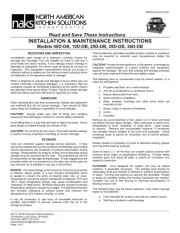
25 Augustus 2025
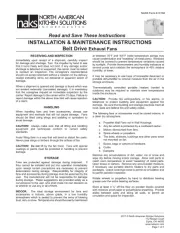
25 Augustus 2025
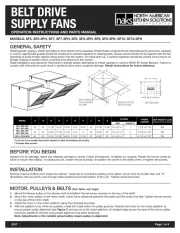
25 Augustus 2025

25 Augustus 2025
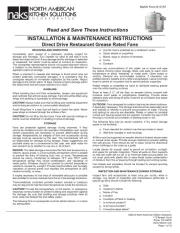
10 Juni 2025

9 Juni 2025

9 Juni 2025

9 Juni 2025

9 Juni 2025

9 Juni 2025
Handleiding Afzuigkap
- Classique
- Hansa
- Mepamsa
- ATAG
- Khind
- Honeywell
- BlueStar
- Mx Onda
- Vox
- Kuppersbusch
- SIBIR
- GE
- Cata
- Ices
- Porter & Charles
Nieuwste handleidingen voor Afzuigkap
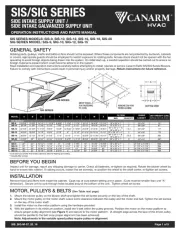
25 Augustus 2025
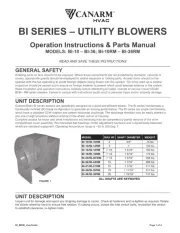
25 Augustus 2025
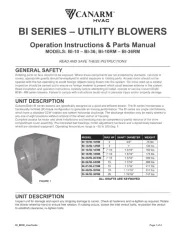
25 Augustus 2025

25 Augustus 2025
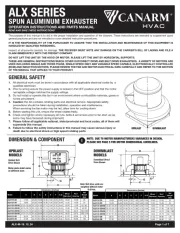
25 Augustus 2025
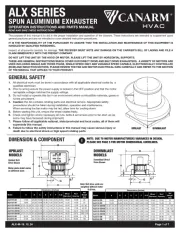
25 Augustus 2025

25 Augustus 2025
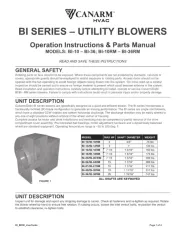
25 Augustus 2025
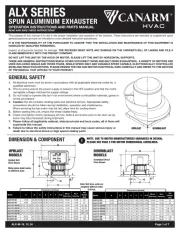
25 Augustus 2025
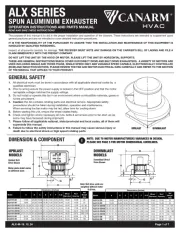
25 Augustus 2025